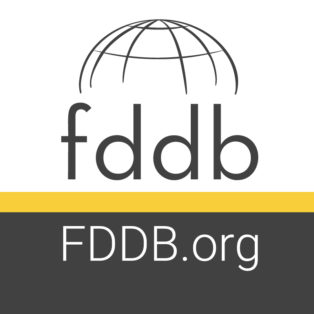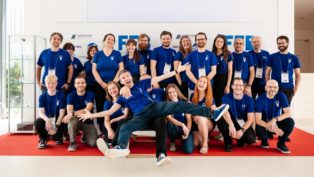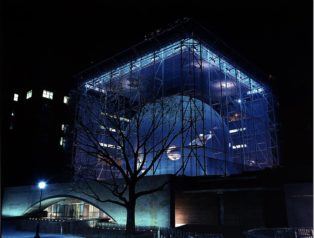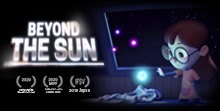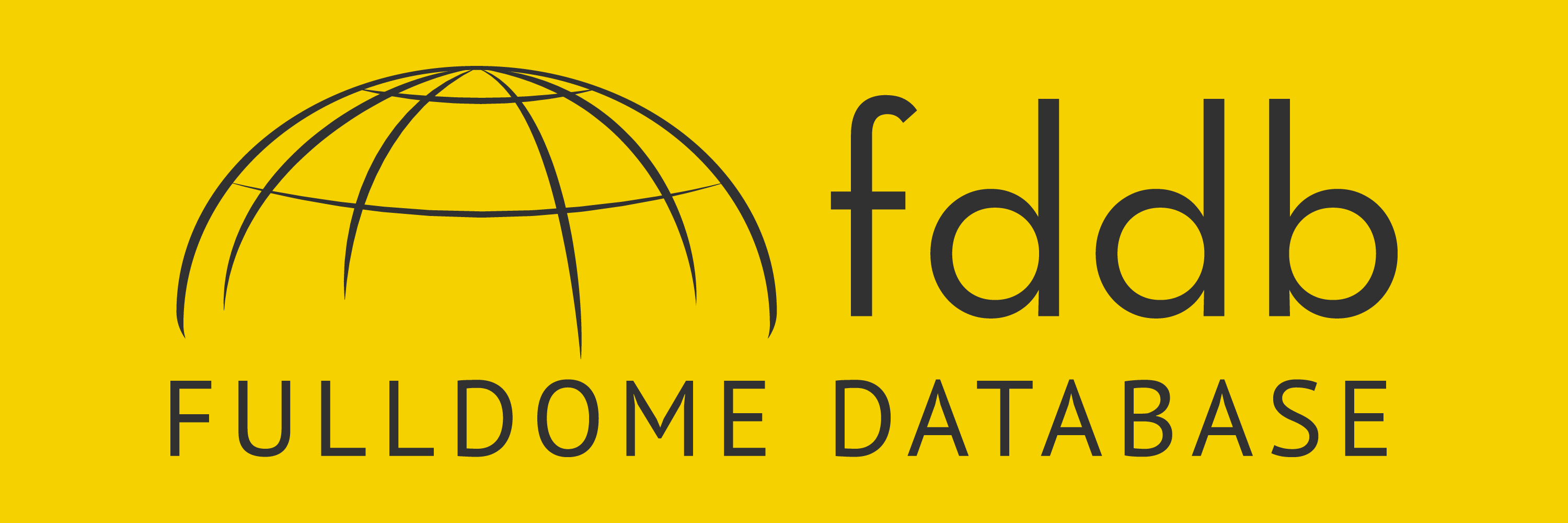Solar Superstorms: How Big Data Feeds a Big Movie [New Trailer]
Solar Superstorms is a 24-min fulldome show narrated by popular actor Benedict Cumberbatch. The film is a collaboration with Spitz Creative Media, the Advanced Visualization Lab at NCSA, University of Illinois and Thomas Lucas Productions in association with Fiske Planetarium at the University of Colorado, Boulder.
The project has been made possible with support from the Commonwealth of Pennsylvania and the Pennsylvania Film Office and funding by the National Science Foundation (NSF), and is beginning to roll out to the industry and the public in 4K 2D, with 5.1 or stereo soundtrack.
From our vantage point, the sun is calm and unchanging. But in fact, its surface is turbulent and chaotic, with giant waves of hot plasma and towering thunderstorm-like features.
Donna Cox
Donna Cox is director of the Advanced Visualization Lab at the National Center for Supercomputing Applications (NCSA) in Champaign, Illinois USA. For their part, the supercomputers now being used to analyze the Sun are increasingly busy. Said Cox, “As supercomputer speeds have increased 100+ fold, teams of scientists generate increasing volumes of numbers that reveal the hidden laws of the universe. The goal of our group is to transform this massive data into a cinematic experience that conveys the science.” The growing complexity of scientific data sets is complemented by better rendering tools and the heightened display capability of top-line 8K fulldome systems, now accepted among the industry as good enough even to fill the place of 15/70 film.
For the experienced production team behind Solar Superstorms, it adds up to the ability to take audiences on a glorious, immersive cinematic tour inside the workings of the Sun. Cox described “visualizations of scientific data never seen before by the public - places invisible to telescopes, made beautiful and visceral; the dynamics of the interior of the Sun, plasma, and giant coronal mass injections. A lot of this cutting edge supercomputer science will be new to the general public - in particular the story of plasma, how the sun erupts in violent storms and how they can affect earth’s communications and power grids,” she said. “The Spitz team has also generated cutting edge animations that contextualize and amplify the scientific data.”
“We were able to deliver many great moments and sequences,” said Solar Superstorms director Thomas Lucas, “for instance, taking us onto the surface of the sun, getting close to the towering, bubbling thunderstorm-like clouds that roil up from the surface and then slip back down, flying in among them, looking at jets of plasma shooting up from the surface…”

The dynamic surface of the sun, with many of its features shaped by powerful magnetic fields. Credit: Spitz Creative Media
The Carrington event
In addition to never-before-seen solar visualizations, Solar Superstorms shares a story that all viewers can relate to personally. Remember the events and chain reactions that took a chunk out of Earth’s communications in the feature film Gravity? Solar Superstorms shows how the natural activity of our Sun could lead to an equally disruptive, real-world result - using the example of a solar eruption that penetrated Earth’s atmosphere some 150 years ago.
The Carrington Event was named after Richard Carrington, an astronomer who observed and documented it. Even in a much simpler world, connectivity was affected. “The great solar storm of 1859 produced an auroral light show not to be believed, but it also knocked out telegraph systems,” said Lucas. “We have much more to lose today.” Solar Superstorms illustrates the event and documents how scientists are studying ways to understand and detect a similar event.
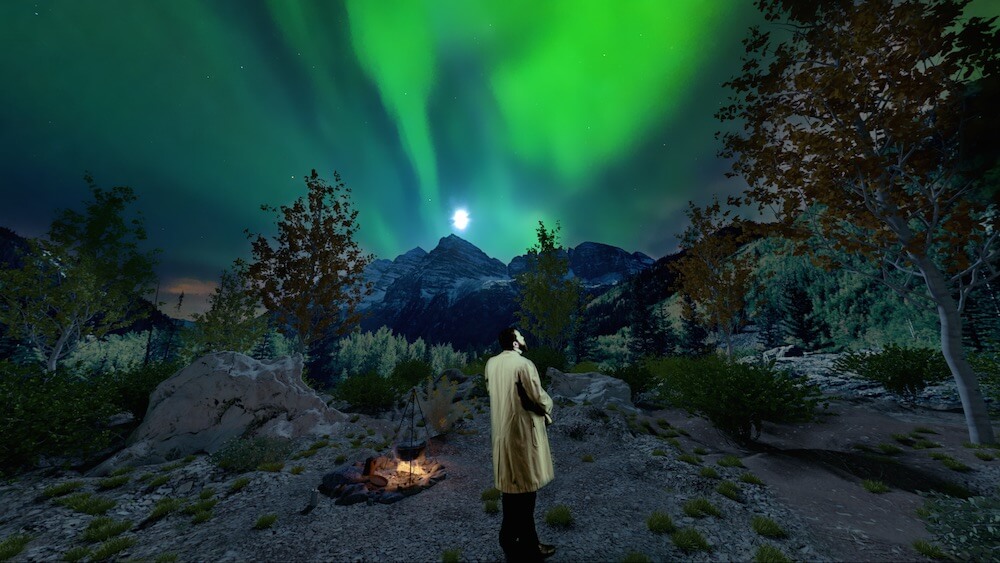
A journalist reported auroras in the wake of the 1859 solar storm were “so bright you could read common print.” Credit: Spitz Creative Media
In collaborating with NCSA, “We explore the conditions within the Sun needed to trigger these really massive blasts that lead to something like the Carrington Event,” said Lucas. “In all that huge complexity of data, we must pull out some simplicity to tell the story while giving a sense of how complex it really is.”
The NSF grant and CADENS
Using supercomputers to simulate natural events is rapidly changing the way science is being done, and behind the visualizations are some of the best peer-reviewed scientific discoveries being shared today. One of the goals of NCSA and the Solar Superstorms team is to help create greater awareness among viewers about the growing role of computational science. “The huge supercomputers are our new disaster forecasters,” said Cox, “and data is the new digital fuel for visualization studies of natural phenomena. But in testing fulldome audiences - which we did when we developed one of our previous shows, Black Holes: the Other Side of Infinity - it became very clear most general audiences do not understand scientific visualization, nor how computational science affects their everyday lives in such things.”
Very few places beyond NASA Goddard and NCSA have the resources available to transform big data into cinematic expression. “When you’re talking about multiple terabytes per science project and more than five of these data-driven scenes used in Solar Superstorms alone, that is a big challenge that almost no production house or museum can handle,” said Cox. “And very few big data visualization teams are focused on public outreach.”
In a notable step forward, NSF recently awarded a $1.5 million grant to CADENS (Centrality of Advanced Digitally ENabled Science) an NCSA-led initiative led by Cox to develop and widely distribute a series of science documentaries highlighting visualizations of computational and digitally-enabled science.
Solar Superstorms is the first production to receive funding from the grant, but the CADENS award, which assembles producers, technologists, artists, and educators to collaborate with scientists and researchers, is significant for the entire fulldome community. “There is definitely an increase on the part of operators, producers and distributors to include this kind of high-level computational science in fulldome shows,” said Cox, “and part of the mission of the CADENS award is to raise awareness and facilitate computational science reaching the public through fulldome shows and documentaries.”
Art-science collaboration
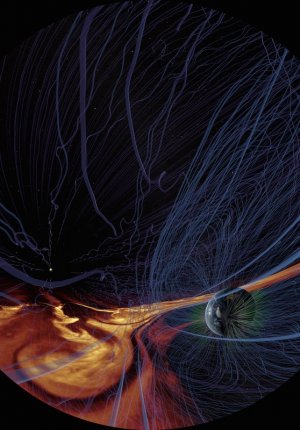
A turbulent pulse of solar plasma interacts with Earth's magnetic field. Credit: Simulation by Homa Karimabadi, University of California, San Diego. Visualization by National Center for Supercomputing Applications
Walking the line between science and art to achieve authentic results involves close, extended dialog with scientists. On the one hand: “We discuss issues of data and representation to maintain accuracy,” said Cox. On the other: “We work with Tom Lucas and others who bring artistry and storytelling sensibility, to make sure it captivates while communicating. Tom and the scientific team have frequent conference calls to achieve a balance between being accurate while also being dramatic and memorable. There may be gaps to fill in – for instance, it is necessary to scale time or space in order to travel across the universe. But we remain true to the data and gather scientists’ feedback when we take artistic license.”
How do the scientists react? “They love to see their stuff on the big screen,” said Cox. “Most of them want very much to see the work get outside of their specialized community to a broader audience, and they understand that to do so, some things need to be explained or slowed down. And they learn about storytelling from us. Working with scientists has been positive for us.”
Does this process affect the scientists’ approach? “Yes,” said Cox. “They often see new things in the visualizations and gain new perspectives of their science. The process of rendering an animation will sometimes bring new things to light and prompt them to research in a new area. For example, in one project the visualization revealed the existence of a secondary tornado in the data not seen by scientists. More than once, these art-science collaborations have influenced new directions in the research.”
The process also underscores how fulldome cinema can become a tool of scientists, and could point to sources of additional funding. “Many of these domes, smaller and larger, are used for science visualizations during off hours,” said Cox. “Some domes are being explored as telescopes into scientific data.”
Science journalism
“Fulldome is a natural way to view this very large big data because it is immersive, and we can bring the audiences on a virtual tour through this phenomena,” says Cox. “It’s a unique way of telling the story, and it supports a variety of approaches. It’s just wonderful to work with people like Tom Lucas, Mike Bruno and the team at Spitz – we’re a very complementary and synergistic. Lucas is not only able to bring together the story from the scientific point of view, but also support it with graphics and animation so that it unfolds for the audience in a natural, interesting way.”
“One thing we find with dome audiences is that they really want to know – they are prepared to watch and listen closely, with singular, focused attention,” said Lucas. “Their expectations for the experience are high. The unique aspects of dome production allow us to really deliver it, and to do so with increasingly higher production values. We have the means to create a high-quality, educational show that is about the world people live in, conveys understanding, and gives a thrill ride. It’s become our formula for success. It’s a bit journalistic – not fantasy or narrative, but topical – exploring something people are curious about, and telling the stories behind the stories.”
The team and scientists at UC Boulder have taken an active role in the production of Solar Superstormss, being involved in script review, fact-checking, and other aspects, as well as hosting rough cut screenings, performing audience evaluations to feed back into the final product, and creating educational outreach materials to support the show.
Reprint credit
This article first appeared in the March 2015 edition of The Planetarian and is published here with permission of the International Planetarium Society.
Have you liked this post? Subscribe to FDDB Newsletter
Sign up now, it's free!










![Solar Superstorms: How Big Data Feeds a Big Movie [New Trailer]](https://www.fddb.org/wp-content/uploads/Solar-Superstorms-Fulldome-Show.jpg)
